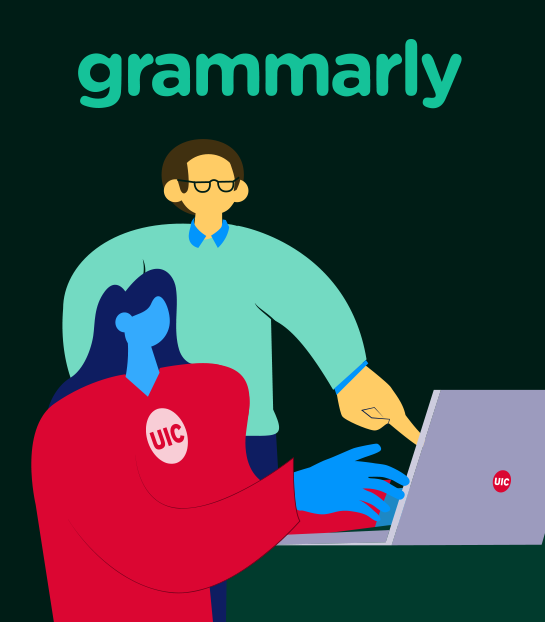Grammarly Resources for Instructors
quote
You can use the Free Grammar Checker. Type in an example of what you want to check, and Grammarly will show you exactly how the real app would treat it.
text

The best way to become familiar with the ins and outs of Grammarly is, of course, to experiment with it. But any AI application these days is kind of like a digital swiss army knife, and not everyone has the time to flip every single dinglehopper out and see just exactly what it’s capable of doing.
Obviously, all you need to do is go to the website for some clarification, right? No, of course not. Websites for tools like Grammarly are like multi-volume fantasy series. There are core volumes, offshoots and supplemental pages, fan-fiction corners (“user communities”), and so on.
So here is a list of some of the most valuable resources from Grammarly’s suite of web-pages curated especially with instructors in mind.
1. Grammarly has its own Grammar Handbook.
Scrolling about halfway down the page, you’ll see the heading “Sharpen Your Grammar,” and beneath it, four columns of grammatical topics with links to short articles on specific elements. Writing instructors (and others) could use this as their required “Grammar resource” in composition courses. It has the benefit of being (1) simpler to navigate than other online guides such as OWL’s, and (2) tying directly into the Grammarly app that many UIC students already use. If you’re a writing instructor in particular, you may want to peruse some of its articles to see if it takes a position on certain issues that you may not hold.
2. Grammarly has an online Grammar Checker tool.
If you’re not sure about Grammarly and want to try it out before you go through the process of installing it, or if you just want to know whether Grammarly considers a specific construction or spelling correct, you can use the Free Grammar Checker. Type in an example of what you want to check, and Grammarly will show you exactly how the real app would treat it.
3. Grammarly explains the “Technical Specifications” of its app for interested users.
You may be the kind of instructor who wants to peek inside the app in search of a detailed understanding of what it actually does and how it does it. While this page doesn’t provide all the technical specifications down to proprietary programming, LLM models, and so on, it does describe in some detail how the app functions on your machine, including a list and description of each service it provides. Here you can find answers to questions like: “What user content does Grammarly send for processing?” and “How does Grammarly Secure Data?”
4. See a snapshot of how Grammarly describes its use cases to students.
If you want a lightning-fast survey of how Grammarly understands its role in student work, this is what you need to see.
On Grammarly’s student-centered page, which contains the usual marketing copy and links to articles and blog posts, there are two especially useful sections instructors might want to view. These are the first two sections that appear when you begin to scroll down. They have the headers, “Ace Your Assignments With Responsible AI” and “Get Comprehensive Real-Time Writing Support.” Beneath each header are tabs for specific functions and use cases Grammarly wants students to understand, and each tab contains a paragraph or so glossing the function together with a brief animated visual showing what that function looks like.
Grammarly is designed to help students “develop,” “rewrite,” “proofread,” and “brainstorm” their writing. Looking at each of these tabs will show you what Grammarly, specifically, means by these terms so that you can determine whether they are in line with your own student learning objectives and pedagogical principles.